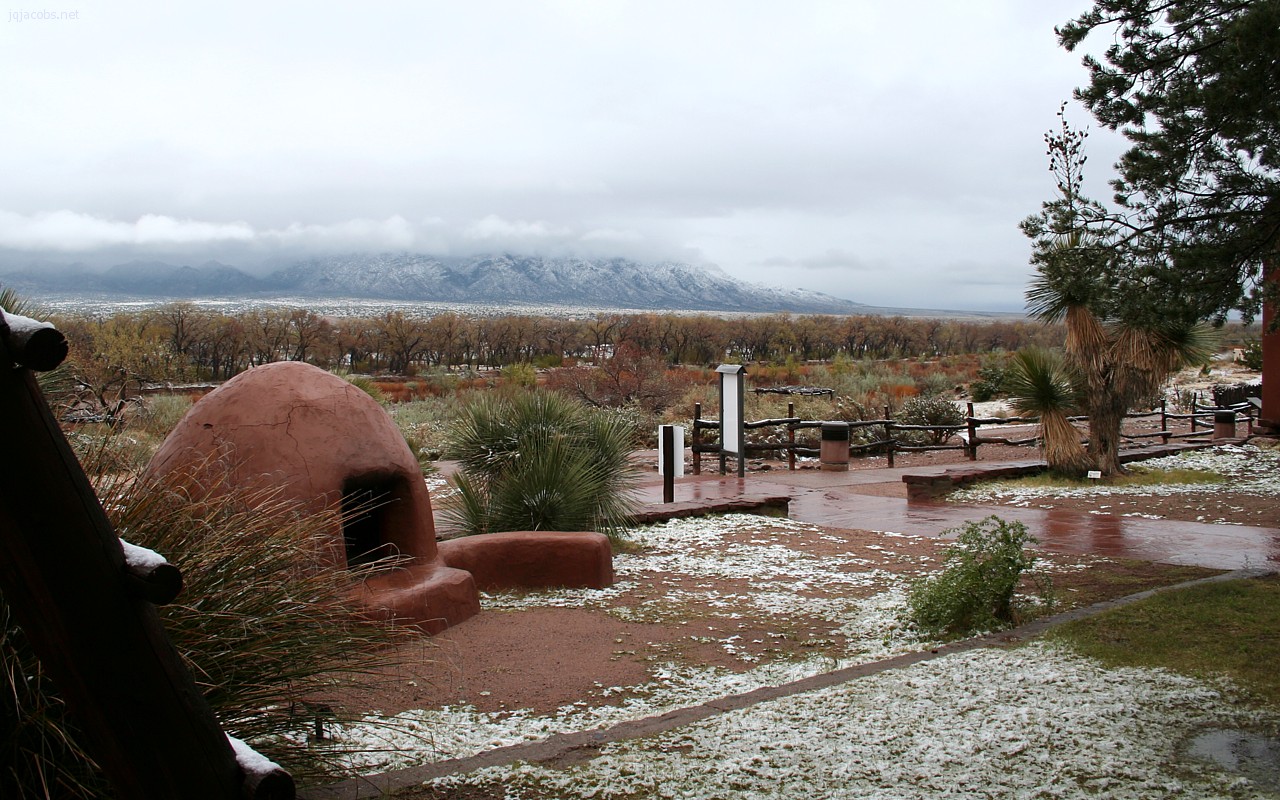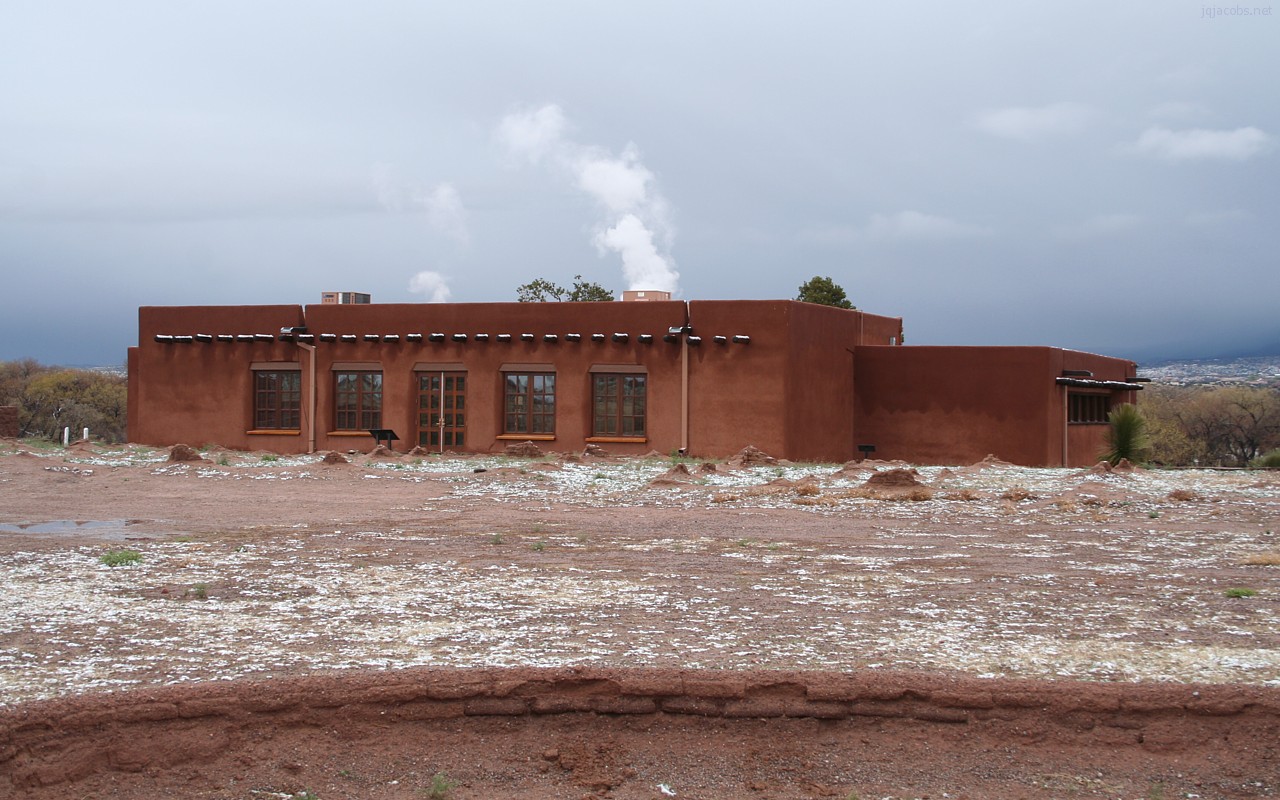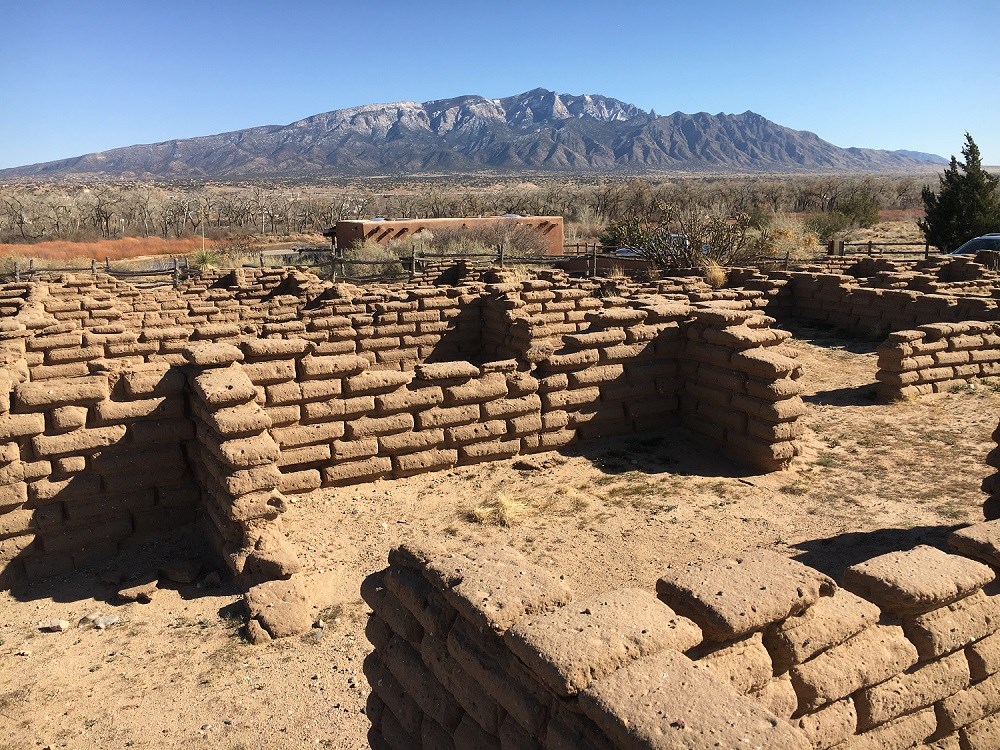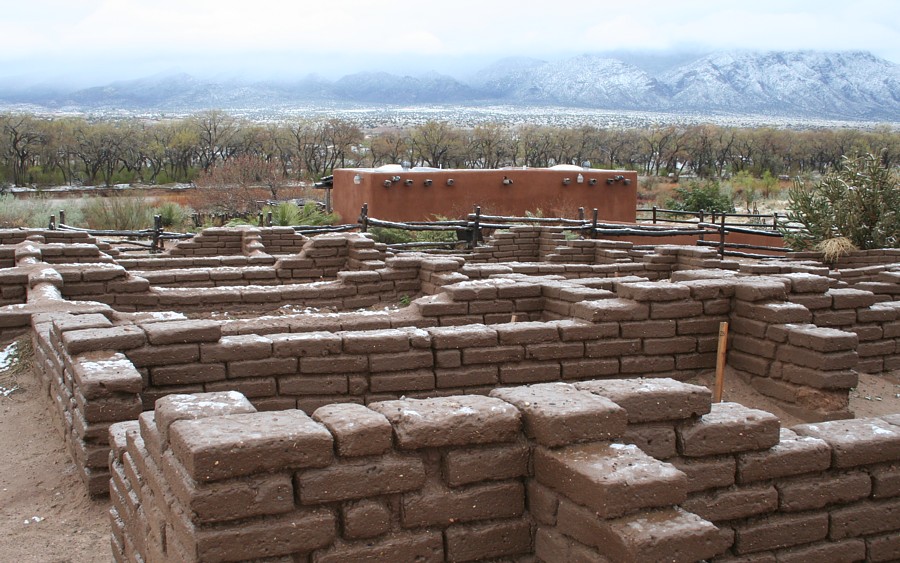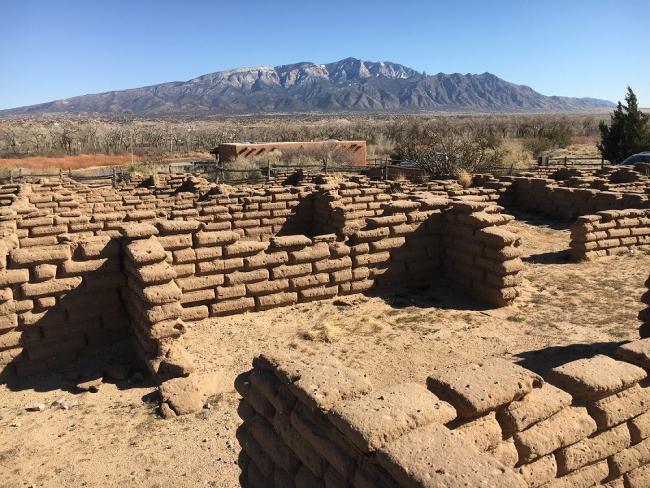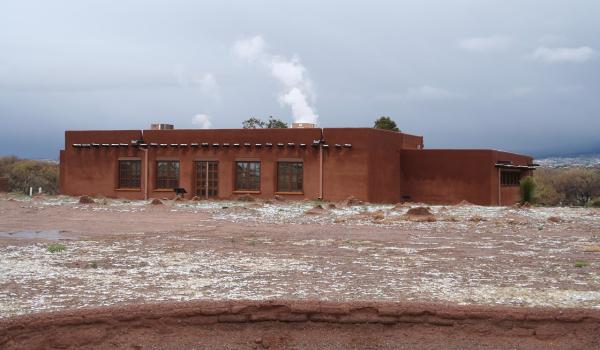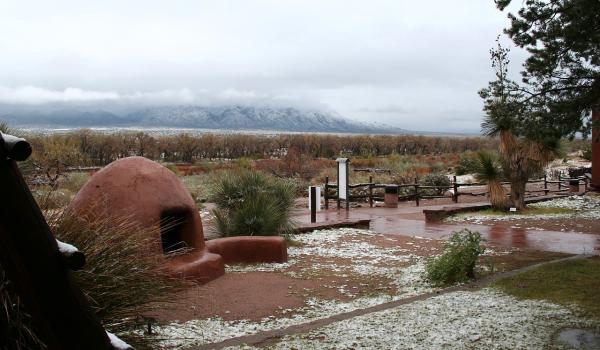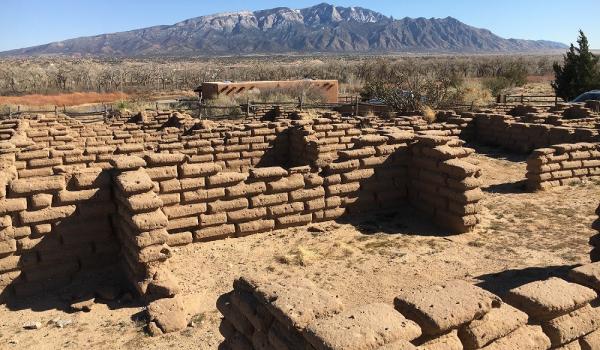Kuakua was one of the largest Pueblo Indian settlements, established around 1300 on the western bank of the Rio Grande, at the northern edge of the Tiguex province. At its peak, it was inhabited by over 20,000 people, in approximately 1,200 two-story adobe homes, warehouses, six underground ceremonial kivas, and three rectangular plazas.
Coronado, accompanied by his army, Native American allies, African slaves, Franciscan friars, and livestock, settled in Kuakua seeking to take control of the pueblos, evangelize, and discover valuable mineral deposits. However, around 1542 he abandoned the area to seek fortune in Texas and the Kansas plains.
The views and stories associated with the site, also known as the Coronado Historic Site, have turned it into an interpretive trail of living history and the experience of the journey.
Between 1934 and 1940, a joint project between the University of New Mexico, the Museum of New Mexico, and the School of American Research was undertaken to reconstruct the ruins and develop an educational site with a museum and visitor center. Some areas were reburied for protection, and certain blocks of rooms and kivas were reconstructed to replicate the original design.
Today, what can be found are lines of giant yucca and the imposing views of the Sandia Mountains and the Rio Grande bosque, while much of Kuakua has faded into the land.




